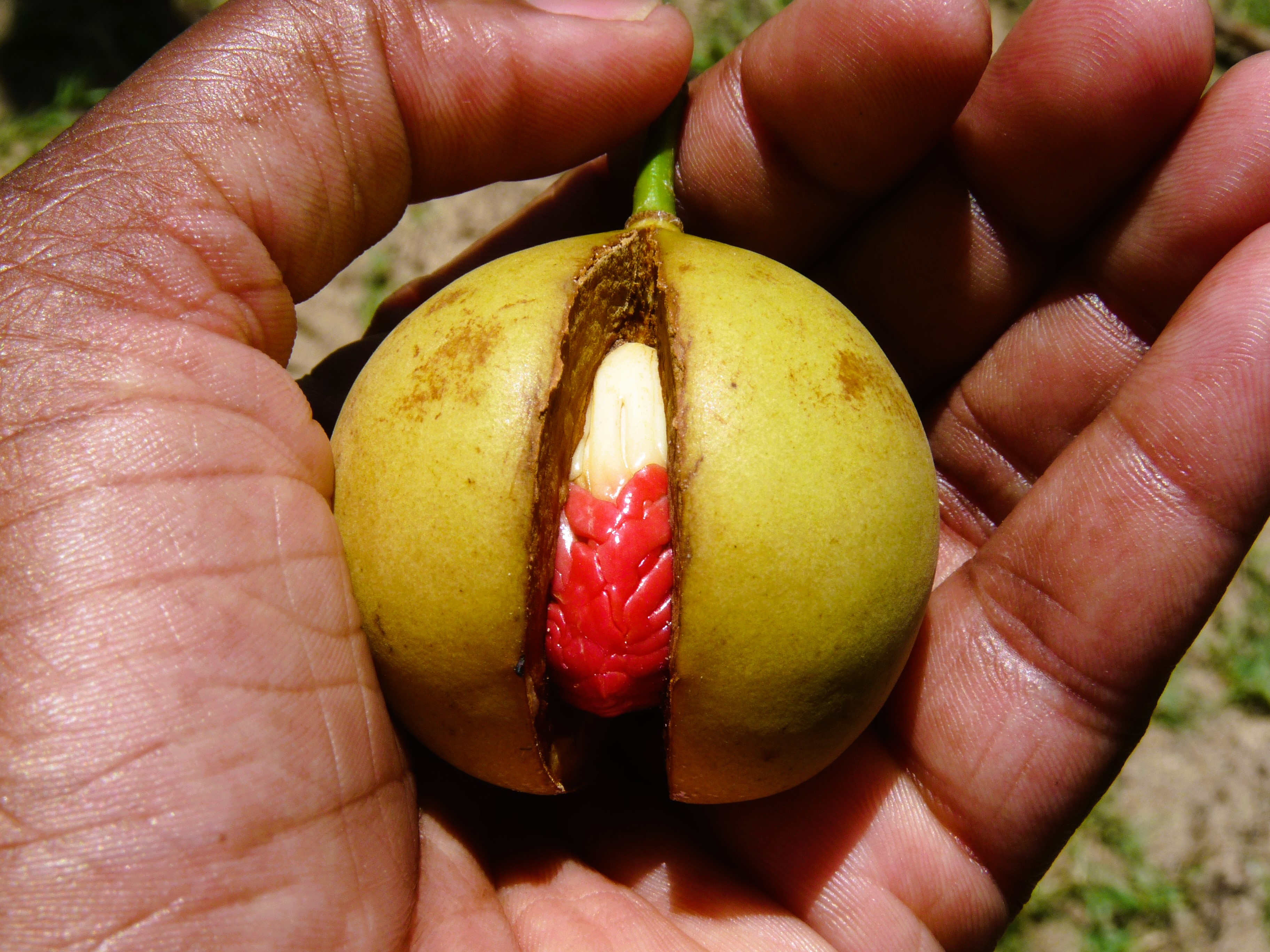On the way to the volcanic mud and minerals baths in Grenada, our driver pointed to a nutmeg tree. I did not recognize it, as I know only the spice – the small brown shell with a rich musky smell, crack it and nutmeg seed is free, ready to grater over drinks, sweets and meats.
No, he said, you can’t eat the fruit of the nutmeg. It doesn’t taste of much. The fruit looks like a small pale and yellow apple on the tree. I picked a ripe fruit, bit it and then spat it out. It was watery and tasteless. Nested inside was the brown seed, surrounded by a deep red webbing. The dried webbing is called mace, and is used as a spice in its own right. I picked another and put it in the side of my backpack.
The nutmeg is on the flag of Grenada. This small Caribbean island is the second largest producer of nutmeg in the world. Nutmeg is not native to Grenada. It comes from another island on the other side of world, in Indonesia.
Later in the evening, sitting on the veranda, watching brown pelicans’ fish for dinner as the sky turned pink and orange, I sipped a rum cocktail, spiced with freshly grated nutmeg. The spice’s journey to Grenada is based on genocide on both sides of the globe, slavery, and the profits sailing into Europe from these twin pillars of their empires.
Nutmeg is as prissy as a pampered princess. It requires specific conditions to grow, and these are found in few places in the world. Like Indonesia, Zanzibar and Grenada. The nutmeg tree is not too tall, conical with slender branches. My birding guide said that he earned pocket money as child, by climbing nutmeg trees and shaking them so the fruit fell. Boys, being lighter, would not break the branches. The practice ended when the government banned children from working.
Nutmeg first came to Europe with the Crusaders. On the journeys to the Middle East to reclaim Christianity, with a side order of looting and pillaging to pay for the trips, they tasted the exotic-to-them spice in local cooking. Europeans could not get enough of it. Of course, the Arab and Turkish traders were not going to tell them where the spice came from. They had the knowledge and a monopoly.
That ended a few centuries later when the Dutch popped up in Indonesia. Nutmeg grows in the Banda Islands there. The Dutch were ruthless in gaining control of the trade. They slaughtered some 90 per cent of the population, imposed the death penalty for anyone caught not following their nutmeg rules or trying to smuggle fresh nutmeg seeds or seedlings. Nutmegs were coated in lime to kill the seed, ensuring that it would not germinate if it fell into non-Dutch hands. The nutmeg and other spice trade created the Dutch golden age in the 1600s.
The British broke the Dutch monopoly on the nutmeg trade a century later. They tried to grow the spice in many places, but it thrived only in Grenada and Zanzibar. In Grenada, nutmeg was grown by enslaved people, and so is entangled with the Atlantic Slave Trade. Nutmeg is now a taken for granted spice around the world. So much so, that the bloody history of the spice is erased.
Another day in Grenada, we had eggy toast for breakfast, flavoured with grated nutmeg and chili flakes. Afterwards I took the forgotten nutmeg fruit out of my backpack. It was squashed, mottled and moldy. I threw it into the yard, perhaps it will sprout. Later in the day we passed a modern farm where nutmeg is grown. Back in the bad old days the farm was a plantation.
© Jacqueline L. Scott. You can support the blog here.

